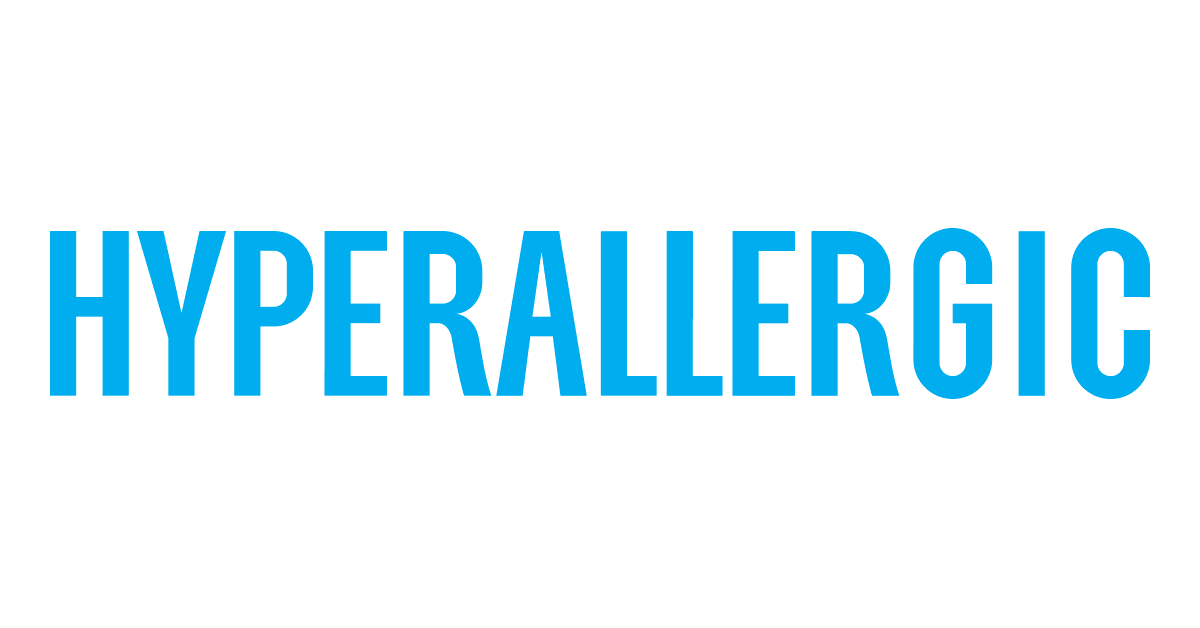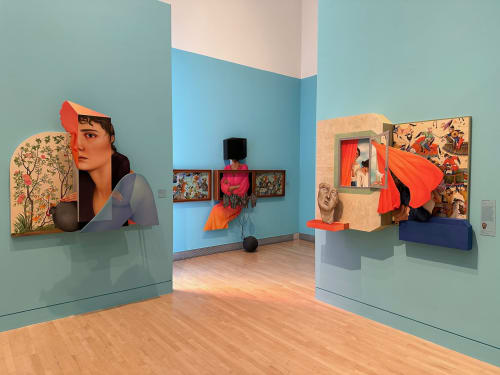
The Iranian artist creates work that moves beyond cliché to create a new visual language about existing freely in the world.
WALTHAM, Mass. — I remember when I was a teen one of the things I loved doing was thumbing through large art books full of Persian miniatures from the Timurid or Safavid eras. They captured the material realities of past worlds with their recognizable but stylized flowers and somewhat formal figures rendered in stately or warrior poses, all engulfed by an explosion of line and design that covered every facet of space the artist made plain.
That feeling of wonder washed over me at Arghavan Khosravi’s solo exhibition at the Rose Art Museum at Brandeis University in Massachusetts. In these predominantly wall works, Khosravi creates art that directly engages with the illusionism of traditional Persian manuscript illumination but infuses it with the feminist aesthetics of Marisol Escobar. With the latter Khosravi shares a love of what I’d describe as mimicry (paging Luce Irigaray), often echoing or copying historical items to transform them or exploit their weaknesses. In Khosravi’s art that means the juxtapositions often reveal the limits of singular images and they are always tending toward the artistic power of hybridity. She’s as much in dialogue with minimalist sculpture and second-wave feminist art as she is with museum-style displays or even the clutter of junk and antique shops.
Arghavan Khosravi, “The Enclosed Garden” (2021)
“The Enclosed Garden” (2021) perfectly encapsulates the strength of her aesthetic. The figure, if we can call it that because it is only a fragment of one, is seemingly silenced by a door chain lock, suggesting home isn’t safe, while a metal screen obscures the beautiful floral pattern behind. In “True to Self” (2023), she directly references a Safavid-era helmet in a Scottish museum, and places her image (or what she calls ‘alter egos’) in relation to it, bringing together two things that historically may not have been found together. Then she places it all on a missile-like form staring at a mirror that reveals her eyes in the reflection. It’s a visceral moment.
She’s clearly growing as an artist, and while the earlier work, like “Parallel Lives (I)” (2017), are not as adventurous as later ones, “Our Hair as a Weapon” (2023) and “The Bird” (2023) are confident and less constrained.
She exhibits no desire to tell us what to think, no lingering on strange forms in what is becoming a form of orientalism in some circles, and she shies away from the media clichés of food, Arabic script, or women in chadors. Instead, she forces us to grapple with each object, plane, and form, thinking through the connection between ourselves, our bodies, and history. I was reminded of those coffee table books that I could never get enough of when I was young. Sure, sometimes it feels like we’re privy to all the tabs open on her browser, but the access to her eclectic mind makes it worthwhile, and even soothing, because these are objects built with love and care, and wrestling with what it really means to free images and objects from their prescribed categories without losing or depending on the importance of context.

